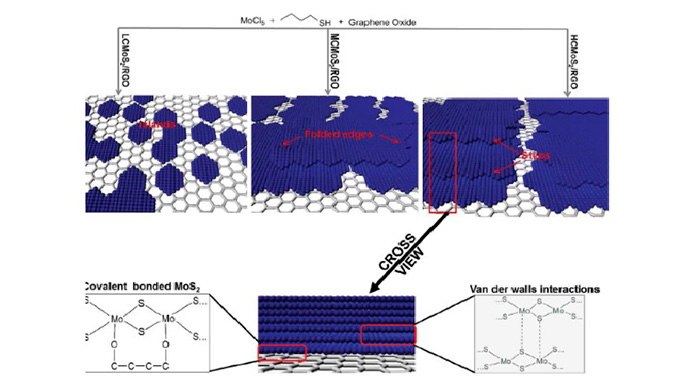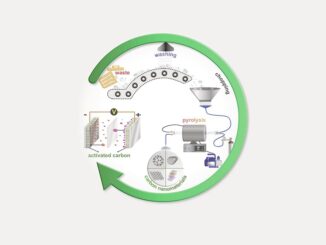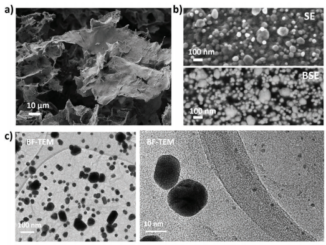
Writers: Edney Geraldo da Silveira Firmiano, Adriano C. Rabelo, Cleocir J. Dalmaschio,Antonio N. Pinheiro, Ernesto C. Pereira, Wido H. Schreiner, Edson Robeto Leite
Keywords: Supercapacitor; reduced graphene oxide
Abstract: Layered molybdenum disulfide (MoS2) is deposited by microwave heating on a reduced graphene oxide (RGO). Three concentrations of MoS2 are loaded on RGO, and the structure and morphology are characterized. The first layers of MoS2 are detected as being directly bonded with the oxygen of the RGO by covalent chemical bonds (Mo-O-C). Electrochemical characterizations indicate that this electroactive material can be cycled reversibly between 0.25 and 0.8 V in 1 m HClO4 solution for hybrids with low concentrations of MoS2 layers (LCMoS2/RGO) and between 0.25 and 0.65 V for medium (MCMoS2/RGO) and high concentrations (HCMoS2/RGO) of MoS2layers on graphene. The specific capacitance measured values at 10 mV s−1 are 128, 265, and 148 Fg−1 for the MoS2/RGO with low, medium, and high concentrations of MoS2, respectively, and the calculated energy density is 63 W h kg−1 for the LCMoS2/RGO hybrid. This supercapacitor electrode also exhibits superior cyclic stability with 92% of the specific capacitance retained after 1000 cycles.




